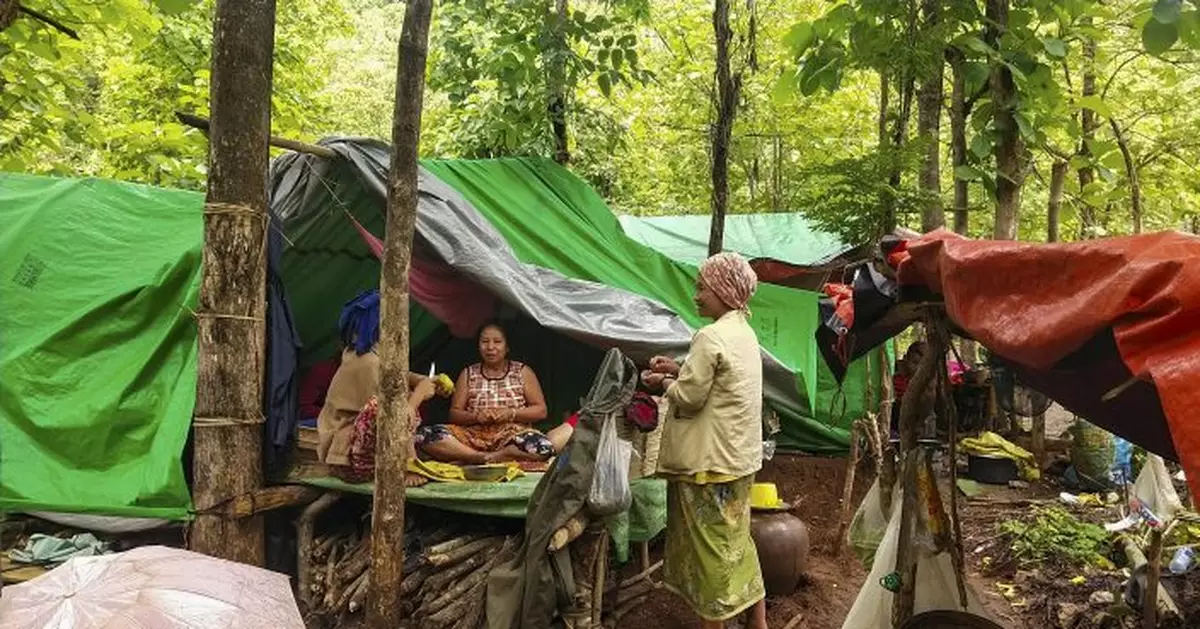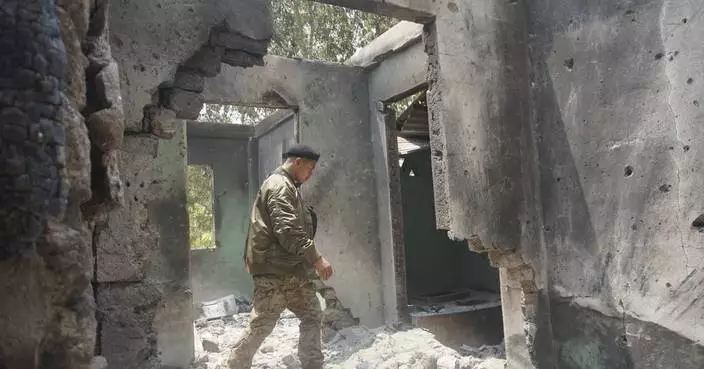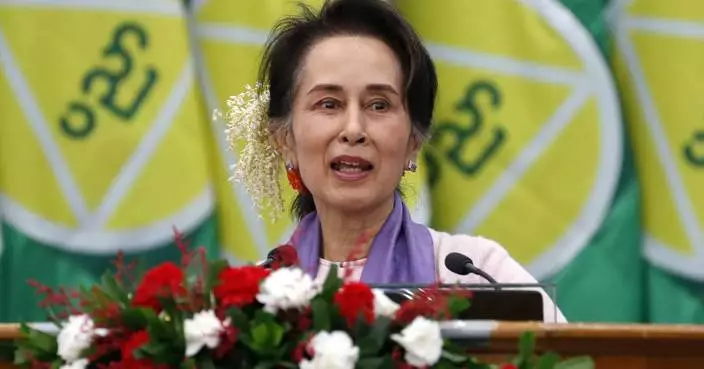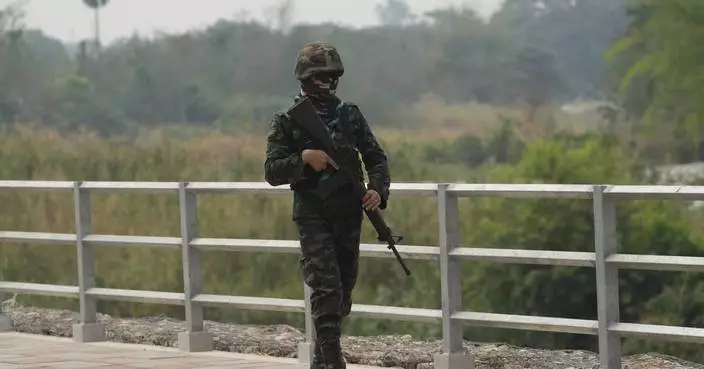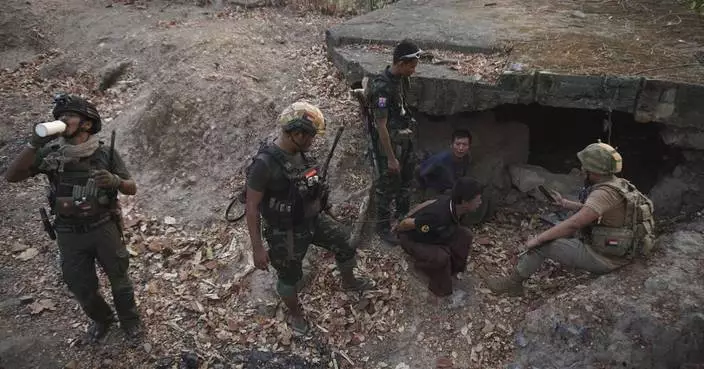The United Nations’ office in Myanmar expressed concern Thursday about escalating human rights abuses after reports this week that a group opposed to the country’s ruling military may have executed 25 civilians it captured and that government security forces had burned down a village.
The struggle between the military regime that took power in February after ousting the elected government of Aung San Suu Kyi and those opposing it has sharpened in recent months.
Elements of what had initially been a nonviolent civil disobedience movement against the takeover evolved into a fledgling armed resistance force in response to harsh repression from police and soldiers who killed hundreds of peaceful protesters and bystanders.
The statement by the U.N. office cited abuses by both sides, calling on “all actors in the current crisis to ensure that international human rights norms and standards are respected.”
“This includes upholding the obligation to minimize collateral harm to civilians and to civilian infrastructure, and prohibiting the application of collective punishments against communities, families or individuals,” the U.N. office said.
The statement noted the discovery of two mass graves in the eastern state of Kayin, also called Karen, containing the human remains of 25 people “who had reportedly been detained on 31 May by the Karen National Defense Organization,” or KNDO.
The KNDO is one of the fighting forces of the Karen National Union, the political organization of the Karen ethnic minority that has been fighting for decades for more autonomy from the central government.
The junta said Sunday that the 25 bodies were those of road construction workers who were detained and killed by the KNDO.
In response, KNDO spokesman Wah Nay Nu was quoted by The Irrawaddy, an independent online news service, as saying the men were not civilians but government military personnel who were spying. Some were shot dead by KNDO forces but others were killed by shelling from government forces, he said.
On Wednesday, however, the Karen National Union issued a statement saying it would form a team to investigate the incident, stating that the group “follows the Geneva Convention which does not condone the killing of civilians during armed conflict.”
The statement added that action could be taken to prosecute any wrongdoing according to relevant laws, without providing specifics.
The U.N. statement called for "those responsible for human rights violations to be held accountable, including the perpetrators and their chain of command.”
Tuesday’s burning of Kinma village in the Magway Region of central Myanmar was also a matter of dispute.
A resident of the village confirmed to The Associated Press accounts in independent media that government troops were responsible for burning down most of the village’s roughly 250 houses, and that an elderly couple unable or unwilling to flee with the rest of the villagers were believed to have perished in the blaze. The villager spoke on condition of anonymity for fear of reprisals by the government.
Government-controlled media, however, reported that “terrorists” were responsible for the conflagration, charging that they had burned down the home of someone unsympathetic to their cause, and that the wind had then spread the fire.
The government and its opponents each refer to the other side as “terrorists.”
U.N. Secretary-General Antonio Guterres “is deeply concerned and disturbed” by the reports of government forces burning down villages in Kinma, U.N. spokesman Stephane Dujarric said.
This "reminds us of the systematic burning of villages in North Rakhime state, which we saw in the past and which led to the dramatic exodus of the Rohingya people,” Dujarric said.
“The Secretary-General continues to strongly condemn the continued repression by the security forces against civilians across the country, which again is having major regional ramifications and requires a unified international response,” Dujarric said.
Noting the discovery of the two mass graves, Dujarric said the United Nations calls on all parties to ensure that international human rights standards are respected including minimizing harm to civilians and civilian infrastructure and prohibiting collective punishment against communities, families or individuals.
Allergy season can bring misery to tens of millions of Americans each year.
Tree, grass, and other pollens can cause runny noses, itchy eyes, coughing and sneezing.
Where you live and what you're allergic to can make a big difference in how bad your allergies are, but there are many things you can do to feel better.
Here are some tips from experts to keep allergies at bay — maybe even enough to allow you to enjoy the outdoors.
There are three main types of pollen. Earlier in the spring, tree pollen is the main culprit. After that grasses pollinate, followed by weeds in the late summer and early fall.
Some of the most common tree pollens that cause allergies include birch, cedar, cottonwood, maple, elm, oak and walnut, according to the Asthma and Allergy Foundation of America. Grasses that cause symptoms include Bermuda, Johnson, rye and Kentucky bluegrass.
The best and first step to controlling allergies is avoiding exposure. That’s easier said than done when it's nice out.
Start with keeping your windows closed at home and in the car, avoiding going out when pollen counts are highest and changing clothes when you get home. The same masks that got us through the pandemic can protect you from allergies — though they won't help with eye symptoms.
Pollen trackers can help with planning. The American Academy of Allergy Asthma and Immunology tracks levels through a network of counting stations across the U.S. Counts are available at its website and via email.
You can't fight an enemy you don't know.
Since many Americans are allergic to several things at once, the first thing to figure out is what specifically you’re allergic to, said Dr. Nana Mireku, an allergist in the Dallas-Fort Worth area.
Over-the-counter nasal sprays can help relieve symptoms, but they take a while to kick in, so it’s best to start them in early in the season, said Dr. Rachna Shah, an allergist and director of the Loyola Medicine Allergy Count.
Antihistamines are another option. Shah said she’s seen some patients benefit from switching to a similar brand if one stops working, but said that there isn’t much broader data to back the recommendation.
For young children and people who have to take many different allergy medications, immunotherapies in the form of shots and oral drops can help desensitize the immune system to allergens, treating symptoms at their root.
The Asthma and Allergy Foundation of America issues an annual ranking of the most challenging cities to live in if you have allergies, based on over-the-counter medicine use, pollen counts and the number of available allergy specialists. This year, the top five were Wichita, Kansas; Virginia Beach, Virginia; Greenville, South Carolina; Dallas; and Oklahoma City.
If you've been thinking it started earlier and seems longer this year, you're on to something.
Shah usually starts looking at pollen counts in the Chicago area in April. But this year, she peeked at her data in mid-February, and tree pollen was already at a “moderate” level.
“This season has been so nuts,” she said. “Granted, it was a pretty mild winter, but I didn’t expect it to be so early.”
Shah said she believes this season will be longer than other years, assuming the weather remains warm.
Experts say climate change has led to longer and more intense allergy seasons.
The Associated Press Health and Science Department receives support from the Robert Wood Johnson Foundation. The AP is solely responsible for all content.
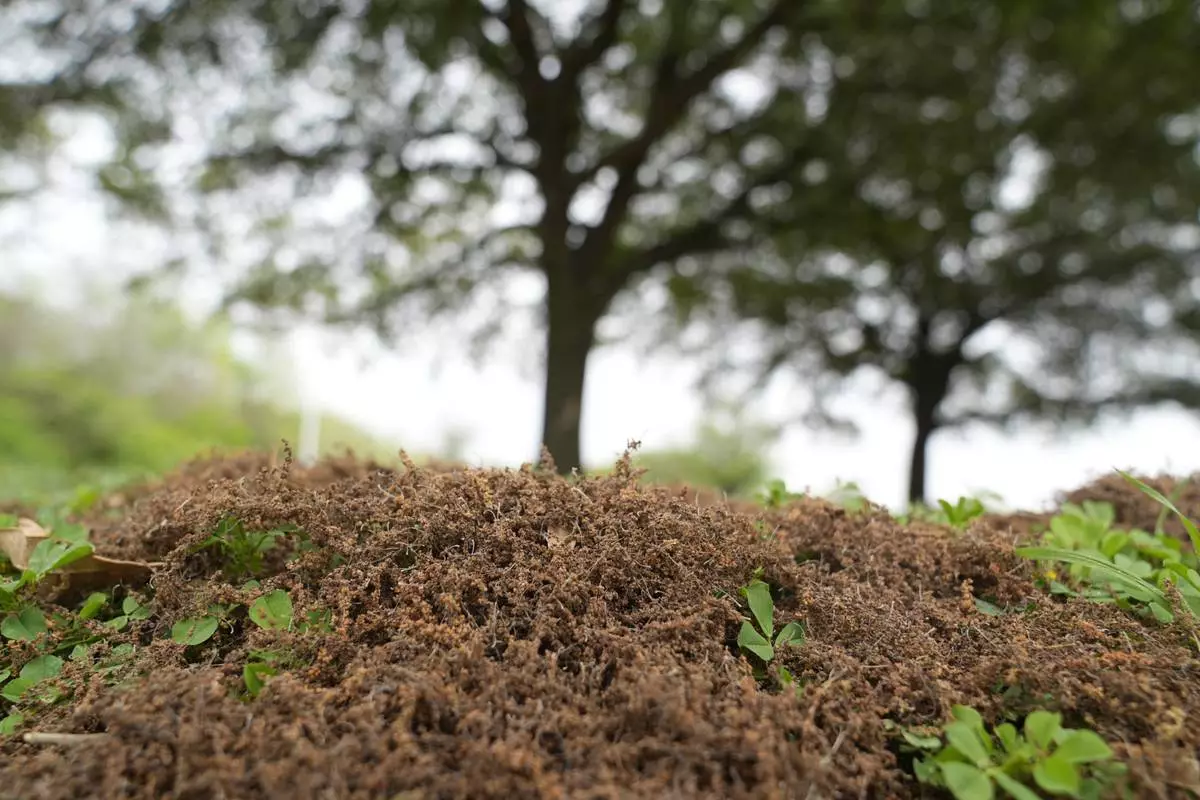
FILE - Tree pollen pods lay in a pile at a park in the Dallas suburb of Richardson, Texas, Thursday, March 21, 2024. The Asthma and Allergy Foundation of America issues an annual ranking of the most challenging cities to live in if you have allergies, based on over-the-counter medicine use, pollen counts and the number of available allergy specialists. In 2024, the top five were Wichita, Kansas; Virginia Beach, Virginia; Greenville, South Carolina; Dallas; and Oklahoma City. (AP Photo/LM Otero, File)
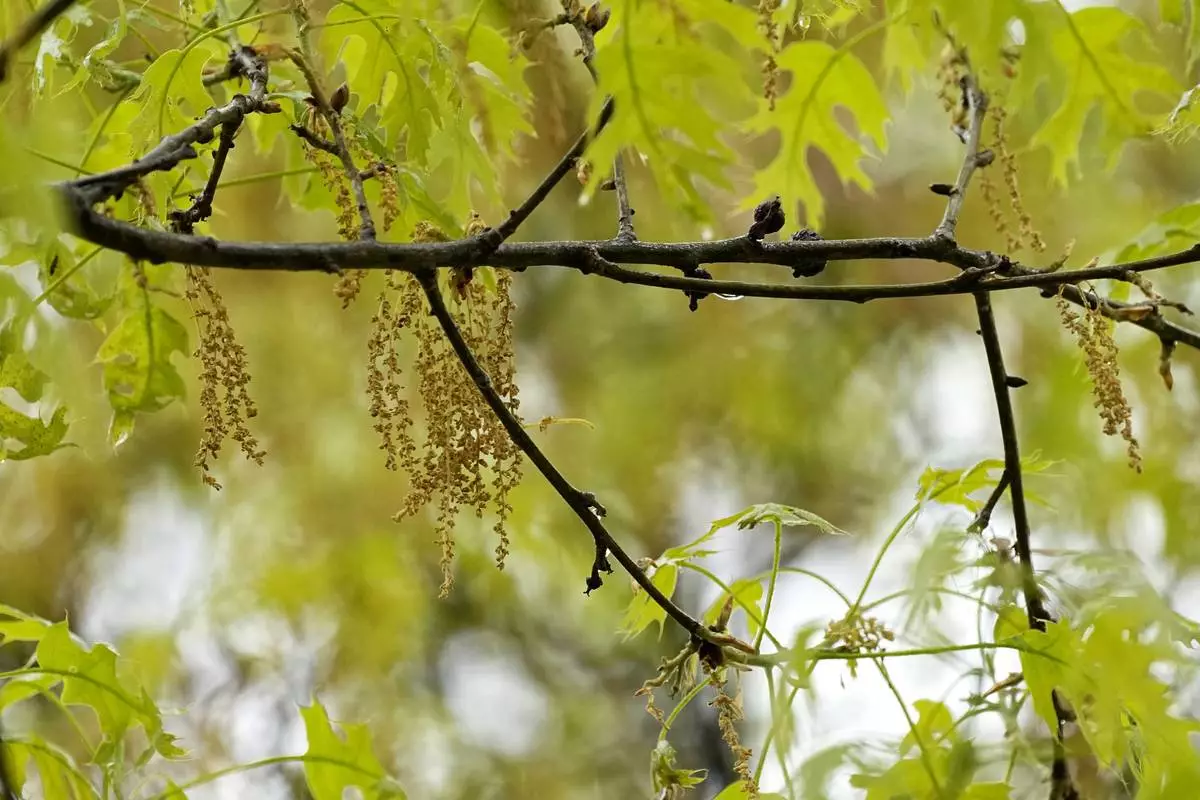
FILE - An oak tree with new leaf growth also shows pollen and a drop of water hanging among the branches at a park in Richardson, Texas, Thursday, March 21, 2024. There are three main types of pollen. Earlier in the spring, tree pollen is the main culprit. After that grasses pollinate, followed by weeds in the late summer and early fall. (AP Photo/Tony Gutierrez, File)


